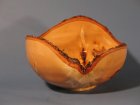Hi,
A very dear friend of my wife died recently. This friend loved Birch trees. I want to turn memorial Birch bowls for my wife, two other close friends and the woman’s son. The photo shows three pieces that I want to use. Three of them are pretty straight forward to trim and get ready for turning. I have never turned anything with a crotch like the front blank. Are there any special considerations to be aware of when I turn this?
Thanks,
George

A very dear friend of my wife died recently. This friend loved Birch trees. I want to turn memorial Birch bowls for my wife, two other close friends and the woman’s son. The photo shows three pieces that I want to use. Three of them are pretty straight forward to trim and get ready for turning. I have never turned anything with a crotch like the front blank. Are there any special considerations to be aware of when I turn this?
Thanks,
George


